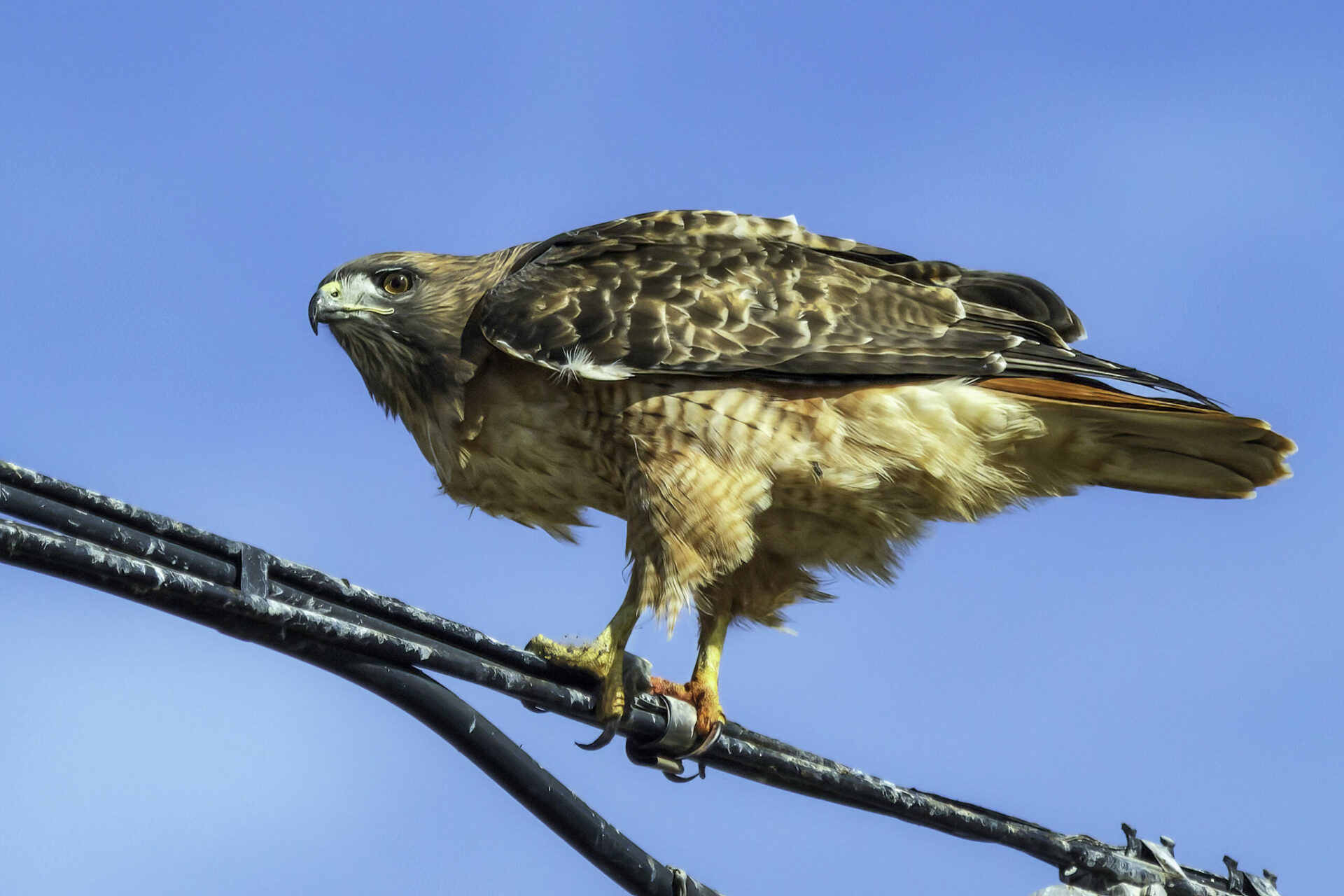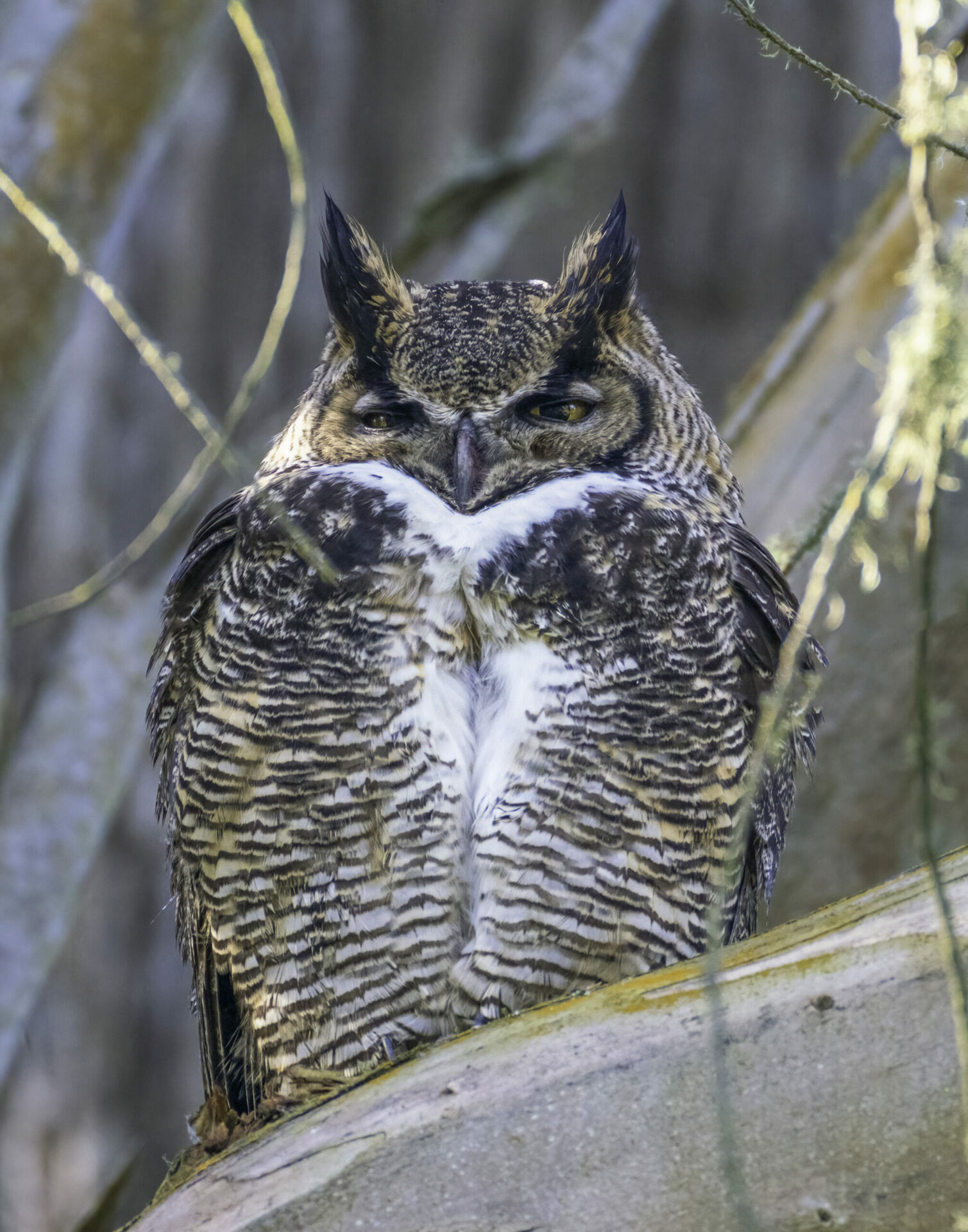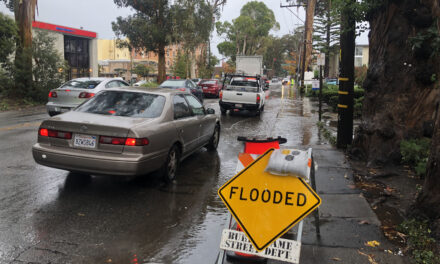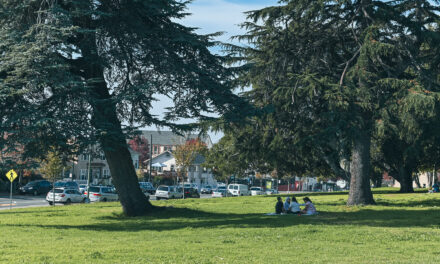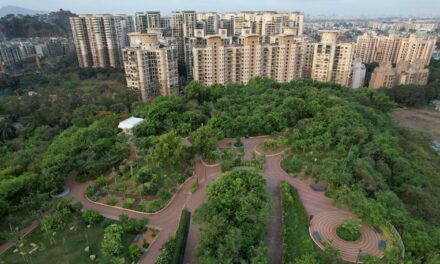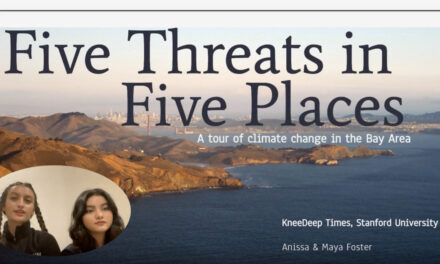Feathered Flames
Red-tailed hawk on wire. Photo: Bob Gunderson.
Among the more well-known causes of wildfire — lightning, volcanic activity, neglected cigarettes, gender reveal parties gone awry — there remains a less notorious culprit: electrocuted birds.
When birds settle on charged portions of the transmission lines or utility poles that span the skyline, they may be electrocuted, fall from the line, and ignite the vegetation and infrastructure below. And in regions with hot, arid climates, where dry grasses and shrubs provide the ideal fuel for flames, these sparks can result in wildfires.
“Birds frequently perch to rest or to hunt on utility poles because they are often the highest and most prominent point in the landscape,” explains Pacific Gas and Electric (PG&E) Spokesperson Deanna Contreras.
Larger-bodied birds — most often raptors like eagles, great horned owls, hawks, and turkey vultures — are most susceptible to electrocution due to their size, as they may come into contact with two transmission wires at once, forming an electrical circuit, or place undue weight on an energized piece of equipment.
Over 10 million avian mortalities occur due to electrocutions each year, with an estimated 44 cases resulting in wildfire in the United States between 2014 and 2018, according to researchers with the Wildlife Society Bulletin. Krysta Rogers, Senior Environmental Scientist for the California Department of Fish and Wildlife, notes that as of August 2022, “20 of the birds [she] received for postmortem examination had evidence of electrocution, or were suspected of being electrocuted.” Electrocutions accounted for about 3.6% of total deaths among the birds Rogers examined between 2015 and 2021, though it is difficult to determine whether fires resulted from these shocks.
Utility companies can take measures to prevent bird electrocutions, however. PG&E has adopted
Other Recent Posts
Assistant Editor Job Announcement
Part time freelance job opening with Bay Area climate resilience magazine.
Training 18 New Community Leaders in a Resilience Hot Spot
A June 7 event minted 18 new community leaders now better-equipped to care for Suisun City and Fairfield through pollution, heat, smoke, and high water.
Mayor Pushes Suisun City To Do Better
Mayor Alma Hernandez has devoted herself to preparing her community for a warming world.
The Path to a Just Transition for Benicia’s Refinery Workers
As Valero prepares to shutter its Benicia oil refinery, 400 jobs hang in the balance. Can California ensure a just transition for fossil fuel workers?
Ecologist Finds Art in Restoring Levees
In Sacramento, an artist-ecologist brings California’s native species to life – through art, and through fish-friendly levee restoration.
New Metrics on Hybrid Gray-Green Levees
UC Santa Cruz research project investigates how horizontal “living levees” can cut flood risk.
Community Editor Job Announcement
Part time freelance job opening with Bay Area climate resilience magazine.
Being Bike-Friendly is Gateway to Climate Advocacy
Four Bay Area cyclists push for better city infrastructure.
Can Colgan Creek Do It All? Santa Rosa Reimagines Flood Control
A restoration project blends old-school flood control with modern green infrastructure. Is this how California can manage runoff from future megastorms?
San Francisco Youth Explore Flood Risk on Home Turf
At the Shoreline Leadership Academy, high school students learn about sea level rise through hands-on tours and community projects.
Great-horned owl, another susceptible raptor. Photo: Bob Gunderson.
an Avian Protection Plan to advise best practices for bird health and partners with the U.S. Fish and Wildlife Service to address bird safety issues. According to Contreras, more than 28,000 of PG&E’s utility poles have been retrofitted with protective covers to prevent direct contact by birds, with the company aiming to retrofit 2,000 more poles each year. Many also have bird flight diverters that reflect in low-light conditions to help birds avoid collision with power lines.
In addition to preventive action on the part of utility companies, climate change mitigation and proper fire management remain crucial to disaster prevention. Though wildfires caused by bird electrocutions are less of a concern on the coasts, where air is cooler and wetter, any potential for fire in a drought-vulnerable California poses a severe threat. Snuffing out these risks means protecting ourselves, wildlife, and the birds soaring across the skyline.






